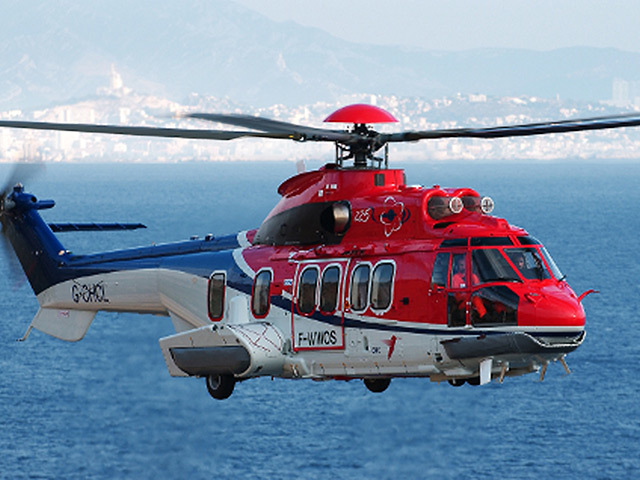
A union leader last night demanded guarantees from employers that workers who feel unable to fly will not be subjected to pressure.
All models of Super Pumas were cleared to fly again yesterday at a safety summit of industry leaders in the wake of last week’s helicopter disaster.
Flights on the fleet of AS332 L and L1 helicopters will resume today, while flights on the L2s – the same aircraft involved in Friday’s fatal crash – will not carry oil workers for a time as a mark of respect.
They will also continue phasing the EC225 – involved in two ditchings last year – back into service.
Despite the Air Accidents Investigation Branch (AAIB) revealing yesterday that they do not know what caused the helicopter to plunge into the sea, the industry’s Helicopter Safety Steering Group (HSSG) ruled last night that the decision to ground the flights should be lifted.
Unite Scottish Secretary Pat Rafferty said: “The industry cannot merely expect the workforce to simply get their boots on and get back to work.”
He added: “Confidence has been shattered and the industry needs to pro- vide substantive evidence – not opinion – to its workers demonstrating the air-worthiness of the helicopters that are now returning to operations.”
The official said the continued grounding of the L2 fleet – the same type involved in last Friday’s crash resulting in four fatalities and also in the April 2009 crash with sixteen fatalities – “was the bare minimum that the industry can do until the recovered black box’s data fully establishes why this tragedy occurred”.
“The decision of the Helicopter Safety Steering Group (HSSG) to return the Super Puma L type, L1 type and the EC225 type, as per its original service plan, to UK offshore operations should be approached with caution and sensitivity,” he added.
Mr Rafferty said: “A phased return of operations must now take place to clear the backlog of workers offshore waiting to get home to their families and those who want to get back to work and earn their keep – but the safety of the workforce must remain paramount throughout this process.
“Looking to the future and moving forward, the recovery of the helicopter’s black box and the data held within will hopefully hold the key to establish- ing why this happened.
“However, from the initial information provided by the Air Accident Investigation Branch (AAIB) on Thursday afternoon, it’s clear that some serious questions need answering. Crucially, why did the helicopter remain intact and upright after it hit the water only to rapidly invert leaving people struggling or unable to get out?
“Furthermore, a forensic analysis into offshore health and safety must take place and an emergency Scottish Parliamentary debate should be the starting point for this.”
READ MORE:
Super Puma flight ban lifted as accident investigators recover black box from Shetland crash
Norway rejects union call to ground Super Puma fleet
Timeline: How the Super Puma tragedy unfolded
Last night the head of the oil and gas industry body vowed to establish an independent review into the safety of offshore helicopters in the wake of the fatal Shetland crash, and last year’s two ditchings which grounded the EC225 fleet for months.
“We commend the HSSG’s thorough review of this situation and the agreement which has been reached,” said Oil & Gas UK chief executive Malcolm Webb.
“Oil & Gas UK is in complete alignment with this agreement, including the decision to return the aircraft in question to flight in a phased and proper manner and to engage with the management and workforce to rebuild trust and confidence.
“In that regard, I wish to make it absolutely clear that, as a result of these arrangements, no-one unwilling to fly will be forced to do so. Oil & Gas UK also notes the request of HSSG to set up an independent review of helicopter operations, with terms of reference to be agreed with stakeholders. This we will do.”
Chief executive of Eurocopter, Guillaume Faury, said he was confident in the safety of his aircraft. “At this stage there is no indication that there was a technical event involved in this accident,” he said.
“We have reviewed all the potential causes and at this very moment we remain confident in the safety of the helicopter.”
He said there were four separate factors which could cause a helicopter to lose power – environmental, human, operational and mechanical.
He said he was confident any mechanical failure could be ruled out.
“From the information that we have obtained, we have narrowed down a number of potential causes,” he said.
“That’s why we remain confident in the safety of our helicopters.”
He added: “We design helicopters to transport people as safely as possible. The only acceptable safety record is zero fatalities.”
Recommended for you
